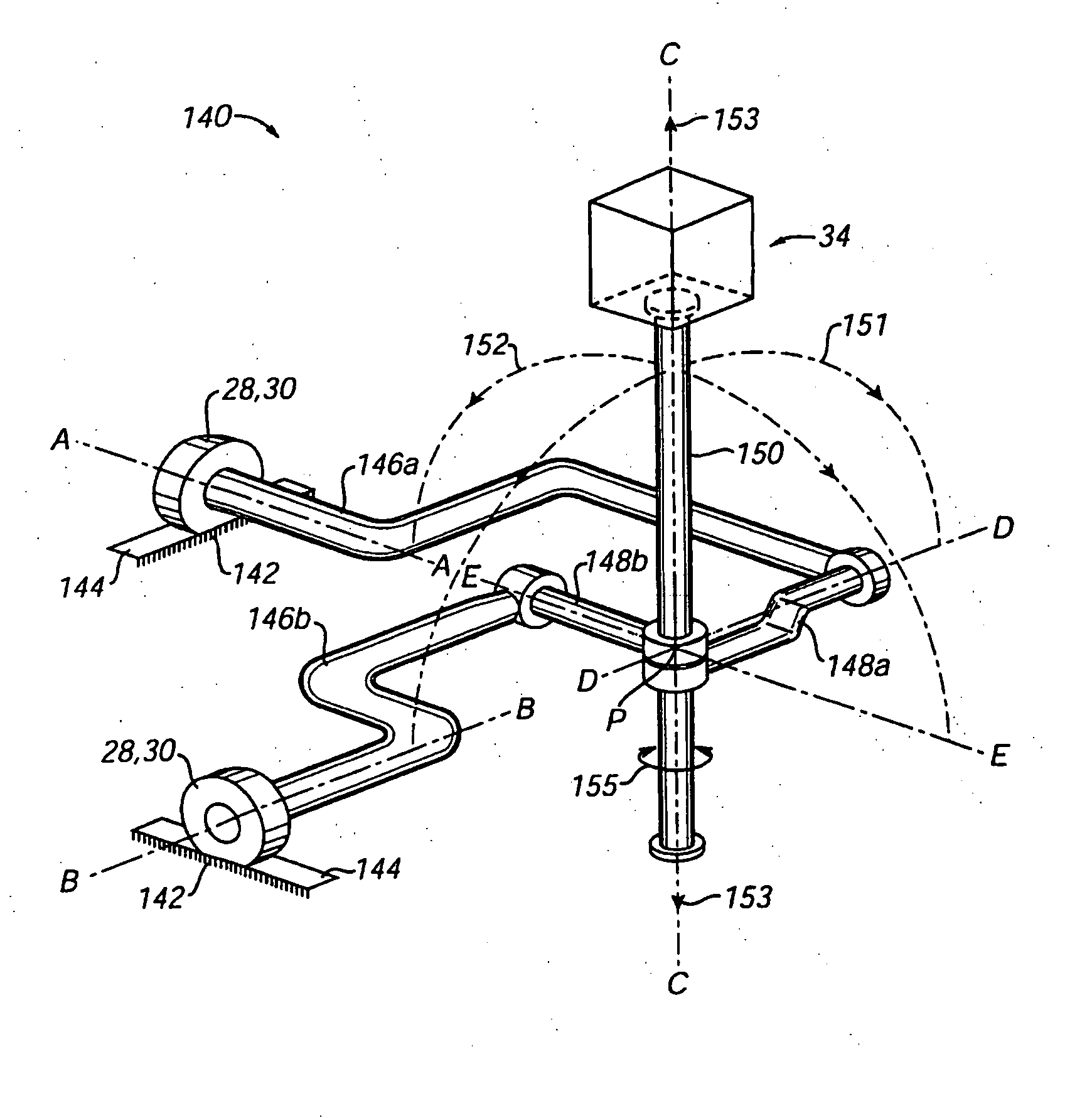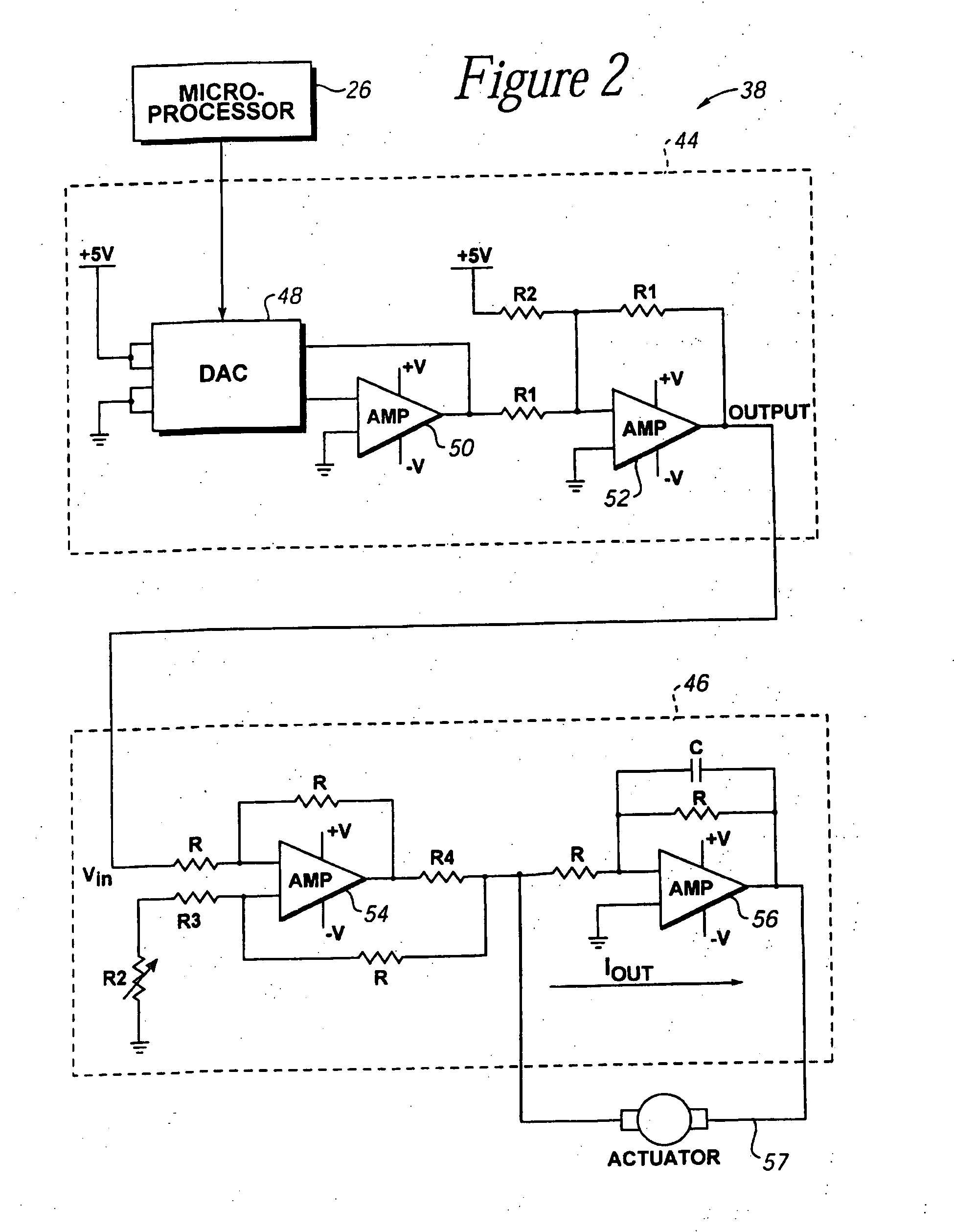Providing force feedback to a user of an interface device based on interactions of a user-controlled cursor in a graphical user interface
a technology of interface device and user interface, which is applied in the direction of mechanical control device, manual control with single controlling member, instruments, etc., can solve the problems of user confusion as to which window a cursor is positioned, user may move the cursor too far, and may require significant dexterity in moving the cursor, so as to save significant processing time and facilitate the movement of the cursor. , the effect of more accurate force feedback
- Summary
- Abstract
- Description
- Claims
- Application Information
AI Technical Summary
Benefits of technology
Problems solved by technology
Method used
Image
Examples
first embodiment
[0088]FIG. 4 is a flow diagram illustrating a method 70 for controlling a force feedback interface device of the present invention. Method 70 is directed to a “host-controlled” embodiment, in which host computer system 12 provides direct, low-level force commands to microprocessor 26, and the microprocessor directly provides these force commands to actuators 30 to control forces output by the actuators.
[0089] For example, the host controlled mode is suitable for embodiments using a USB communication interface. Data rates are sufficiently high to allow the host to communicate at 500 Hz or greater and provide realistic force feedback to the user object 34. The USB Isochronous Data Transfer mode of USB is suitable to provide the necessary high data rate.
[0090] The process begins at 72. In step 74, host computer system 12 and interface device 14 are powered up, for example, by a user activating power switches. After step 74, the process 70 branches into two parallel (simultaneous) proc...
second embodiment
[0114]FIG. 5 is a flow diagram illustrating a method 100 for controlling force feedback interface device 14 of the present invention. Method 100 is directed to a “reflex” embodiment, in which host computer system 12 provides only high-level supervisory force commands (“host commands”) to microprocessor 26, while the microprocessor independently determines and provides low-level force commands (force values) to actuators 30 as an independent “reflex” to control forces output by the actuators.
[0115] The process of FIG. 5 is suitable for low speed communication interfaces, such as a standard RS-232 serial interface. However, the embodiment of FIG. 5 is also suitable for high speed communication interfaces such as USB, since the local microprocessor relieves computational burden from host processor 16. In addition, this embodiment can provide a straightforward command protocol, an example of which is described with respect to FIGS. 9 and 14, and which allow software developers to easily...
PUM
 Login to View More
Login to View More Abstract
Description
Claims
Application Information
 Login to View More
Login to View More - R&D
- Intellectual Property
- Life Sciences
- Materials
- Tech Scout
- Unparalleled Data Quality
- Higher Quality Content
- 60% Fewer Hallucinations
Browse by: Latest US Patents, China's latest patents, Technical Efficacy Thesaurus, Application Domain, Technology Topic, Popular Technical Reports.
© 2025 PatSnap. All rights reserved.Legal|Privacy policy|Modern Slavery Act Transparency Statement|Sitemap|About US| Contact US: help@patsnap.com



